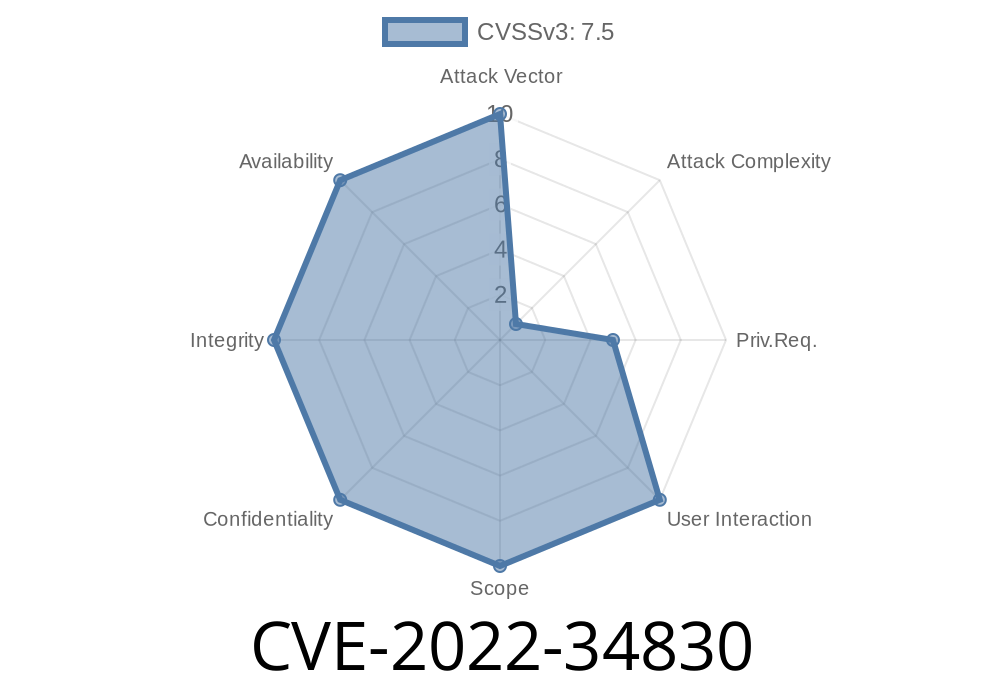In 2022, a vulnerability labeled CVE-2022-34830 was disclosed that affects certain ARM GPU drivers—specifically those in use up to June 29, 2022. This bug is not just a theoretical risk: it opens the door for non-privileged users to gain improper access to GPU memory that's already been freed. In simple terms, it’s a TOCTOU (Time-of-Check to Time-of-Use) race condition which, if abused correctly, allows reading or maybe even manipulating sensitive information that should have gone out of reach. Let’s explain what this means, how it works, what the code might look like, and what you can do to stay safe.
What is a TOCTOU Race Condition?
TOCTOU stands for "Time-Of-Check To Time-Of-Use." This is a type of programming mistake where a program checks some property of a resource (like a memory page, a file, or a GPU buffer), but then—before it is used—multiple threads (or users) can change things. In other words: the state of the thing being checked becomes invalid because time passed and someone else touched it.
For example, suppose code checks if a memory pointer is valid, then the memory is freed by another thread, and then the code tries to use the pointer. This is the classic TOCTOU problem.
Quick Explainer: ARM GPU Memory Management
ARM GPUs are popular because they power many phones, tablets, smart TVs, and even some cars. The GPU driver partly runs in the Linux kernel (or other OS), which means a bug could have serious privilege impacts.
When applications want to use the GPU, they're given access to various buffers—chunks of memory that the GPU can draw from or write to. Properly, when a buffer is freed, the GPU and applications must let go of any references. If not, one program (or attacker) could snoop on (or corrupt) another program’s data.
Where’s The Bug?
The official Arm security advisories page for CVE-2022-34830 tells us:
> “A race condition in the GPU driver allows a non-privileged user to perform improper GPU processing operations, gaining access to memory that has already been freed. This is a TOCTOU (Time of Check Time of Use) flaw.”
What does this look like? Imagine this simplified pseudo-code
// Simplified GPU buffer freeing logic (vulnerable)
int free_gpu_buffer(struct gpu_buffer *buf) {
if (!buf->in_use) {
// Time-of-check: Looks safe to free
kfree(buf->memory);
buf->memory = NULL;
// ... other cleanup
return ;
}
return -EBUSY;
}
// Somewhere else, race condition is possible
void gpu_user_request() {
struct gpu_buffer *buf = get_buffer_from_user();
if (buf->memory != NULL) {
// Time-of-use: oops, maybe the buffer was just freed in another thread!
process_buffer_on_gpu(buf->memory);
}
}
Between checking if buf->memory is valid and using it, another thread (or a fast attacker) may have freed it.
Get a handle to a GPU buffer.
2. Race the system: They cause the buffer to get freed in one thread, and as soon as it's freed, in another thread—or maybe by abusing a scheduling trick—they quickly call code that tries to use that same buffer.
3. Access Freed Memory: If the system has allocated that memory to something else, reading or writing could leak or corrupt sensitive data.
In the worst case, attackers could yank secrets straight from kernel space, inject code, or crash the system.
A Real-World Exploit Example (Pseudo-code)
Imagine you found out that buffer IDs aren’t checked atomically. Here’s what you might do (this isn’t a ready-to-use exploit, but it shows the *idea*):
// This runs in two threads, for maximum race condition mayhem:
void *thread_free(void *arg) {
int buf_id = *(int*)arg;
// Frees buffer, making it available for reallocation
ioctl(gpu_fd, FREE_BUFFER, buf_id);
return NULL;
}
void *thread_use(void *arg) {
int buf_id = *(int*)arg;
// Tries to use the buffer after it's freed
ioctl(gpu_fd, PROCESS_BUFFER, buf_id);
return NULL;
}
// Somewhere in main():
pthread_t t1, t2;
int buf_id = create_gpu_buffer();
// Start racing
pthread_create(&t1, NULL, thread_free, &buf_id);
pthread_create(&t2, NULL, thread_use, &buf_id);
pthread_join(t1, NULL);
pthread_join(t2, NULL);
// Now check /proc/kmsg or dmesg for crashes or leaks!
If you’re lucky, the PROCESS_BUFFER call happens *just* after the buffer is freed. What memory gets mapped at that freed buffer spot? Sometimes secrets, sometimes zeroes—sometimes *just what the attacker wants*.
What Devices Are Affected?
- ARM Mali GPUs using drivers up to June 29, 2022 (Mali Driver version notes)
- Chips used in Android phones, tablets, smart TVs, automotive, and even IoT devices relying on affected driver versions
Are There Patches?
Yes! Arm issued fixes in June 2022 (see the official bulletin). OS vendors, including Google’s Android security team, pushed these changes into their security updates.
If you’re making drivers or kernel builds, upgrade to the latest Mali drivers. If you’re using standard phones or laptops, make sure your device is up-to-date.
CVE-2022-34830 is a real risk for Android and Linux devices using ARM GPUs.
- The bug is a classic TOCTOU race condition that lets non-privileged users access (or corrupt) freed GPU memory.
Attackers can race GPU buffer free and use operations to exploit this flaw.
- Update your device to patch this vulnerability—kernel, GPU driver, and OS updates usually fix it.
References and Further Reading
- Arm Mali GPU Kernel Driver Security Update - CVE-2022-34830
- NIST National Vulnerability Database Entry for CVE-2022-34830
- Common Weakness Enumeration: TOCTOU
Stay safe: keep your devices patched, and stay aware of the risks hiding in the low-level drivers you'd never otherwise think about.
Timeline
Published on: 11/23/2022 03:15:00 UTC
Last modified on: 11/27/2022 04:31:00 UTC
